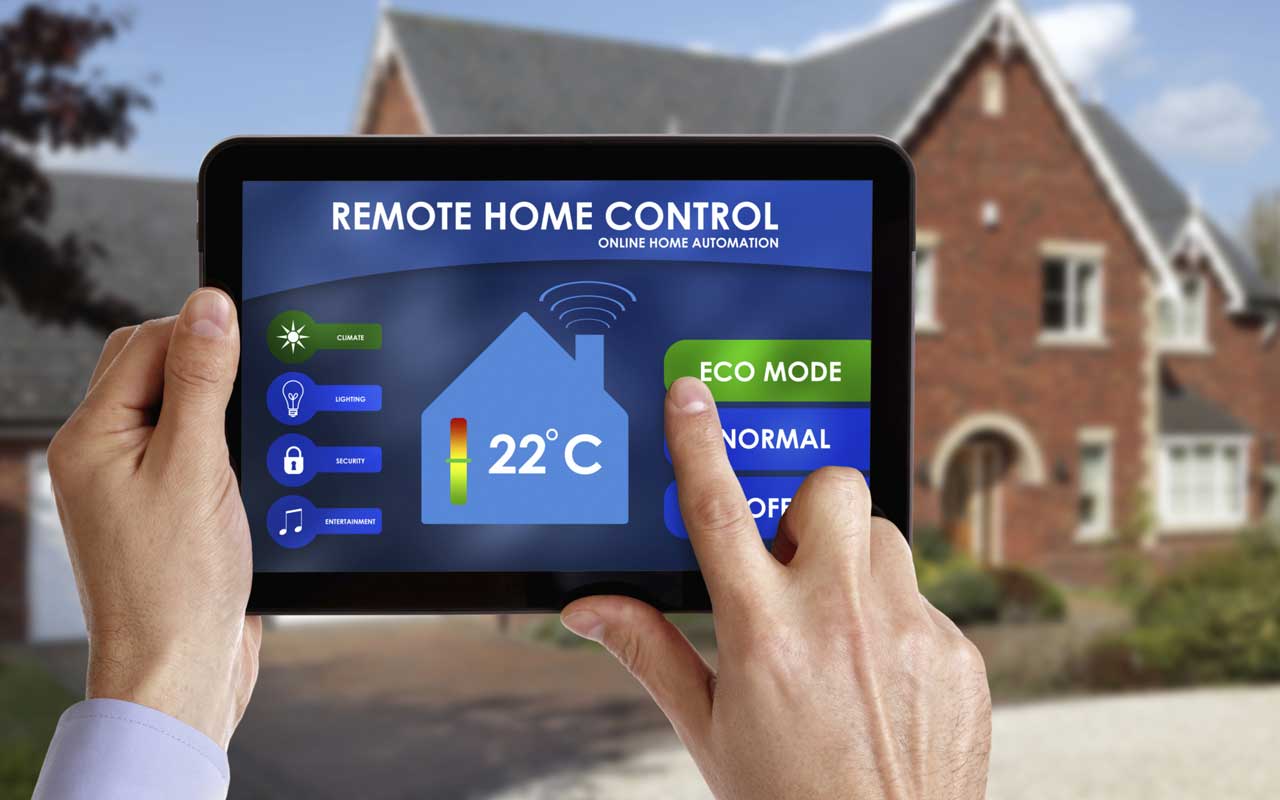
How to Upgrade to a Smart Home Sustainably
A smart home integrates technology and automation to allow homeowners greater control over their homes’ functions, offering enhanced convenience, efficiency, and security.
The intersection of smart technology with sustainability is fundamental to smart homes. By optimizing energy use, such systems contribute to environmental conservation. These features enhance comfort and convenience and support sustainable living by reducing energy consumption and minimizing waste.
Sustainability Benefits of Smart Homes
Smart homes are not just about cutting-edge technology and convenience — they’re also a gateway to a more sustainable future. Here are some compelling ways smart home systems contribute to energy efficiency, waste reduction, and a healthier planet overall.
- Energy Efficiency
Smart homes are pivotal to energy conservation, addressing the fact that Americans spend around $130 billion annually on wasted energy. Homes can reduce unnecessary energy consumption by integrating intelligent systems like automated thermostats, smart lighting, and energy-efficient appliances.
This technology allows for precise control and scheduling of home systems, ensuring households only use the necessary energy, drastically reducing the common waste in traditional homes.
- Water Conservation
Smart irrigation and water management systems are becoming increasingly vital as over 30% of the U.S. and Puerto Rico grapple with drought conditions as of December 2023. These systems optimize water usage in landscaping and gardening by using sensors and weather forecasts to determine the water needed.
This technology can adjust watering schedules based on real-time data, such as soil moisture levels and expected rainfall, ensuring plants receive adequate hydration without excess. It conserves water — a crucial resource in drought-stricken areas — and supports sustainable water management practices, essential in today’s changing climate.
- Cost Savings
Sustainability reduces resource consumption, lowering utility bills and operating costs. For instance, some smart thermostats can activate based on various ambient conditions, such as the time of day, humidity, and temperature. These thermostats can learn a homeowner’s schedule and preferences, automatically adjusting heating and cooling to optimize comfort and energy use.
Over time, these savings can substantially offset the initial investment in sustainable technologies. Additionally, ecological practices often decrease maintenance costs, as eco-friendly materials and systems are typically more durable and efficient.
- Waste Reduction
Smart appliances use less energy and water than traditional appliances. For example, smart washing machines and dishwashers can sense the load size and soil level, adjusting the water and energy usage accordingly. This precision prevents excess consumption and reduces utility bills.
Additionally, smart refrigerators can track expiration dates and inventory, helping to minimize food waste by alerting homeowners when they need to use items. Some models suggest recipes based on what’s inside, ensuring homeowners utilize food efficiently.
Tips to Upgrade Sustainably
Creating a smarter, more sustainable home can be exciting and daunting. Here are essential tips to ensure the upgrade to a smart home is as eco-friendly as it is technologically advanced.
- Start Small
Starting with simple yet impactful changes is wise when upgrading to a smart home. Investing in a smart hub can be transformative, allowing a homeowner to control various aspects of their abode easily. For instance, a smart hub allows them to adjust their home’s lighting, ensuring lights are only on when needed, or change the TV’s channel, adding convenience to their daily routine.
- Choose Eco-Friendly Products
Selecting sustainable smart devices ensures that home upgrades align with eco-friendly principles. It’s imperative to look for machines with advanced technological features and prioritize energy efficiency and minimal environmental impact.
Choosing products with energy-saving capabilities, like LED lighting or ENERGY STAR-rated appliances, can significantly reduce carbon footprint. Additionally, opting for devices made from sustainable or recycled materials further contributes to environmental conservation.
- Integration With Renewable Energy
 Integrating smart home technology with renewable energy is a forward-thinking approach to sustainability. A prime method is to connect smart home systems — such as thermostats, lights, and security devices — with solar energy. This integration reduces dependence on traditional energy sources and optimizes the utilization of clean, renewable energy.
Integrating smart home technology with renewable energy is a forward-thinking approach to sustainability. A prime method is to connect smart home systems — such as thermostats, lights, and security devices — with solar energy. This integration reduces dependence on traditional energy sources and optimizes the utilization of clean, renewable energy.
For homeowners in the U.S., there is an added financial benefit to this approach. They can use a 26% tax credit on installing solar energy systems. This incentive significantly reduces the initial investment required for solar panels, making the transition to renewable energy more accessible.
- Regular Maintenance and Updates
Regular upkeep and timely repairs ensure smart devices and systems operate efficiently, minimizing energy use and extending these technologies’ life spans. Well-maintained equipment performs better and consumes less energy, reducing environmental impact and lowering utility costs.
Moreover, consistent maintenance can prevent the premature need for replacements, reducing waste and the demand for new resources. By prioritizing the maintenance of smart home technologies, homeowners can contribute to sustainability, ensuring their smart homes remain eco-friendly and cost-effective over time.
Green Upgrades for a Smarter Planet
As homeowners upgrade to smart homes, keeping sustainability at the forefront of their decisions is essential. Embracing eco-friendly practices benefits the environment and enhances the efficiency and longevity of their technologies.
By adopting sustainable practices, homeowners can contribute to a healthier planet while enjoying modern comforts and conveniences. Let these upgrades testify to how tech and sustainability can work together for a brighter, greener future.